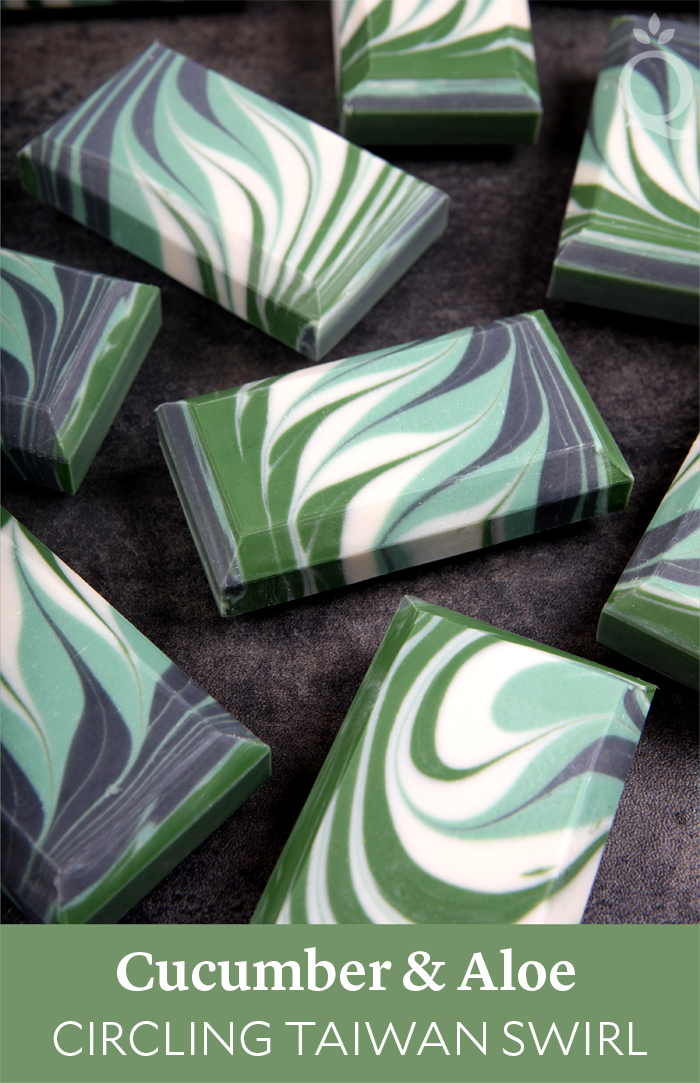
The Circling Taiwan Swirl is a twist on the classic Taiwan Swirl. The design involves swirling soap down the length of the mold and then swirling around the edge of the mold. That pulls the soap in a circular motion and creates a beautiful and delicate look. See the technique in action in the How to Create a Circling Taiwan Swirl video.
The Circling Taiwan Swirl is an advanced technique because it requires a good understanding of trace. It’s best to use a slow-moving recipe with plenty of liquid oils and a fragrance that doesn’t accelerate. New Cucumber Garden Fragrance Oil behaves wonderfully, and it’s perfect for the green color palette.
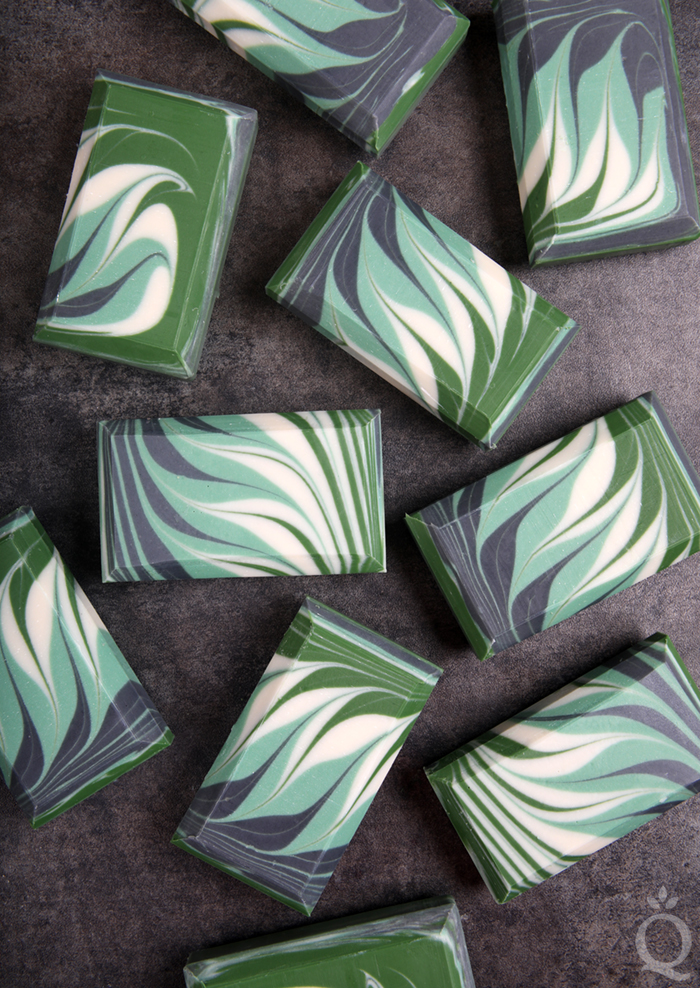
This recipe uses aloe vera liquid in place of distilled water. When lye is added to room temperature aloe vera liquid, it turns a light amber color and has a slight smell. This is completely normal. The lye scorches components of the liquid, causing it to change color. We found that didn’t have a huge effect on the colors in the soap. Feel free to use distilled water for this recipe if you prefer.
The first time we made this batch, we made the classic mistake of over stick blending the soap. It got too thick and didn’t have a fluid texture. Below, you can see our first batch on the right and our second batch on the left.
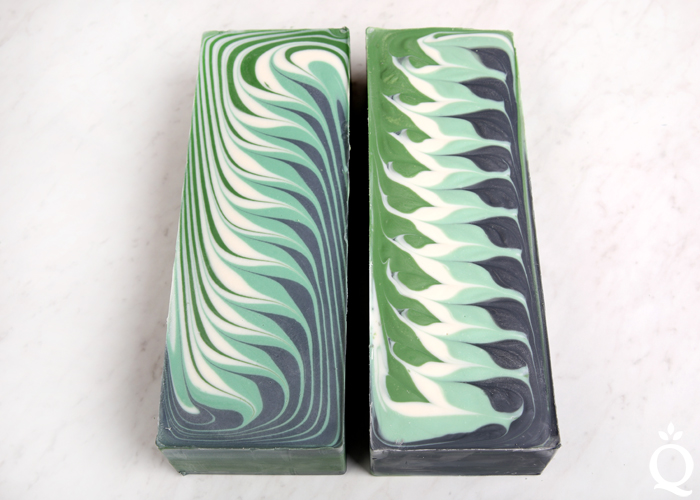 Trace makes a huge difference when it comes to the Circling Taiwan Swirl. Medium trace soap was used on the right, while the soap on the left was made with thinner soap.
Trace makes a huge difference when it comes to the Circling Taiwan Swirl. Medium trace soap was used on the right, while the soap on the left was made with thinner soap.
If the soap is too thick, the swirling tool won’t pull the soap in different directions and the swirl looks more bulky. It’s still a very pretty soap, but it looks completely different. If you’re debating whether to to stick blend more, walk away from the blender!
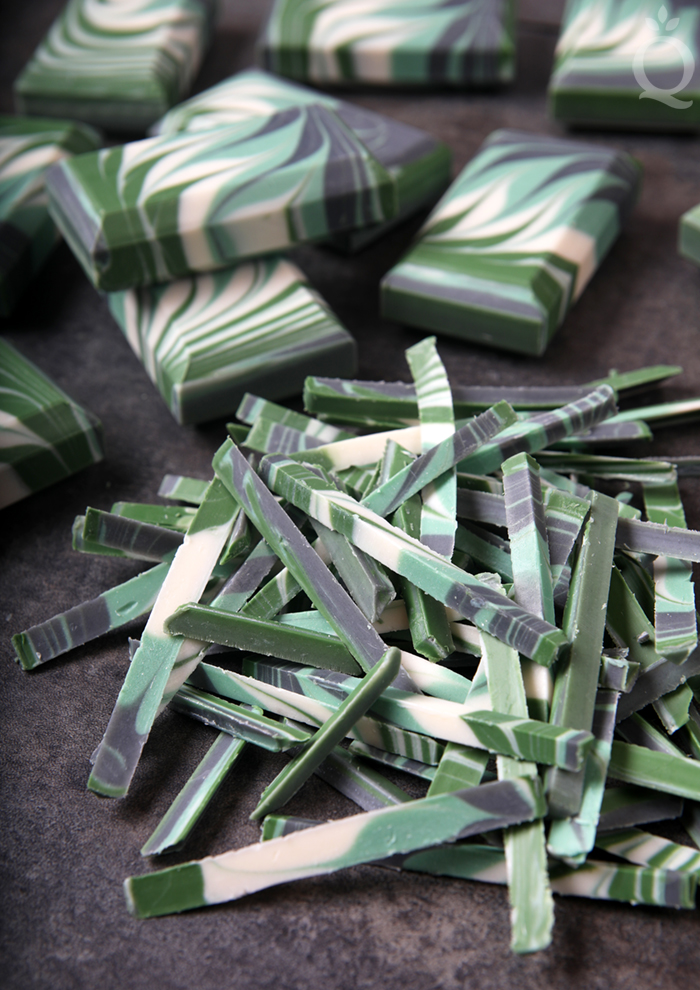 We bevelled these bars to give them a polished look.
We bevelled these bars to give them a polished look.
What You Need: Click below to add everything you need for this project to your Bramble Berry shopping cart!Cucumber & Aloe Circling Taiwan Swirl Soap
10″ Silicone Loaf Mold
Multi-Pour Sectioning Tool for 10″ Silicone Loaf
3.3 oz. Avocado Oil (10%)
8.3 oz. Coconut Oil (25%)
3.3 oz. Cucumber Seed Oil (10%)
9.9 oz. Olive Oil (30%)
8.3 oz. Palm Oil (25%)
10.9 oz. Aloe Vera Liquid
4.6 oz. Sodium Hydroxide Lye
1.75 oz. Cucumber Garden Fragrance Oil
Green Chrome Oxide Pigment
Aqua Pearl Mica
Titanium Dioxide
Black Oxide
If you’ve never made cold process soap before, stop here. We highly recommend checking out our FREE four part SoapQueen.tv series on cold process soapmaking, especially the episode on lye safety. And if you’d rather do some reading, Bramble Berry carries a wide range of books on the topic, including Pure Soapmaking. You can also check out the digital downloads.
FRAGRANCE PREP: Measure 1.75 ounces of Cucumber Garden Fragrance Oil into a small glass container and set aside.
COLORANT PREP: Disperse 2 teaspoons of the titanium dioxide into 2 tablespoons of sunflower or sweet almond oil (or any other liquid oil). Use a mini mixer to get rid of any clumps. Disperse 1 teaspoon of Green Chrome Oxide Pigment into 1 tablespoon lightweight liquid oil. In separate containers, disperse 1/2 teaspoon Aqua Pearl Mica and 1/2 teaspoon black oxide into 1/2 tablespoon lightweight liquid oil. Use a mini mixer to get rid of clumps.
Optional: To ensure the titanium dioxide blends smoothly into the soap batter, we recommend micronizing it before dispersing it in oil. Use a coffee grinder to break up any clumps of color and prevent streaks of white from showing in the final soap. We like to use a coffee grinder that has a removable stainless steel mixing area for easy cleaning.
MOLD PREP: Insert the two end pieces of the Multi-Pour Sectioning Tool into the 10″ Silicone Loaf Mold. The side with three sections should be facing out. Insert the three long dividers into the two end pieces to create four equal sections of the mold. Set aside. See how this is done here.
SAFETY FIRST: Suit up for safe handling practices. That means goggles, gloves, and long sleeves. Make sure kids, pets, other distractions, and tripping hazards are out of the house or don’t have access to your soaping space. Always soap in a well-ventilated area.
ONE: Slowly and carefully add 4.6 ounces of lye to 10.9 ounces of aloe vera liquid. Gently stir until the lye has fully dissolved. The liquid will turn a yellow color and have a light smell – this is normal. Set it aside to cool. If you’d like a harder bar of soap that releases faster from the mold, you can add sodium lactate to the cooled lye water. Use 1 teaspoon of sodium lactate per pound of oils in the recipe. For this recipe, you’d add 2 teaspoons sodium lactate.
TWO: In a large glass bowl, combine and melt 3.3 ounces of avocado oil, 8.3 ounces coconut oil, 3.3 ounces cucumber seed oil, 9.9 ounces olive oil, and 8.3 ounces of palm oil (remember to fully melt then mix your entire container of palm oil before portioning). Once the lye water and the oils have cooled to 130 degrees F or below (and are ideally within 10 degrees of each other), add the lye water to the oils and stick blend the mixture to a very thin trace.
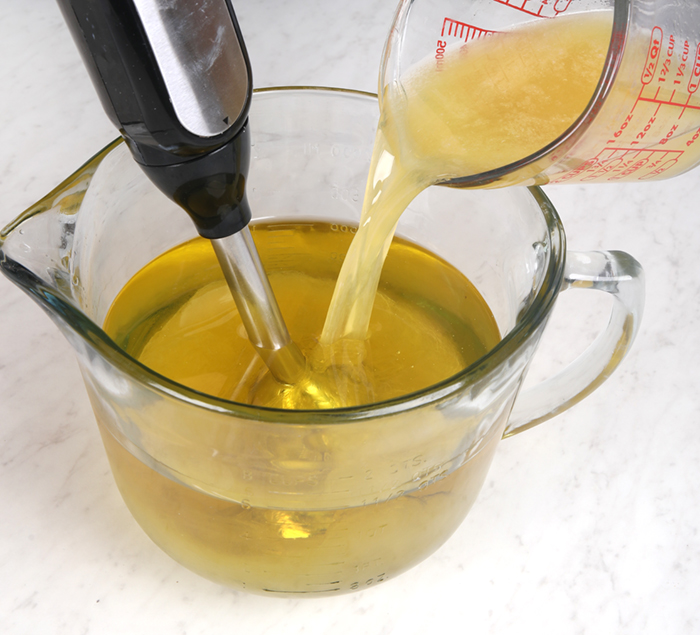
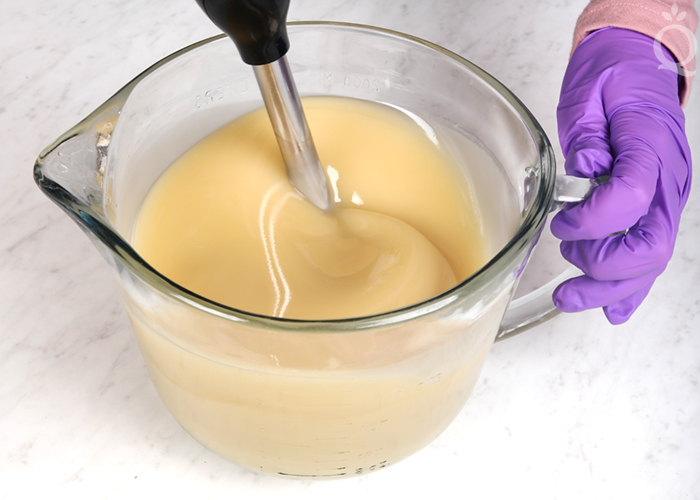
THREE: Split the soap batter evenly into four equal containers – it’s okay to eyeball it. Each container will be about 350 mL. Add the following amounts of dispersed colorants to each container, and use a whisk to mix in thoroughly.
- Container A (white): 1 tablespoon dispersed titanium dioxide
- Container B (light green): 1 teaspoon dispersed titanium dioxide + 1 teaspoon dispersed Aqua Pearl Mica + 1/4 teaspoon Green Chrome Oxide Pigment
- Container C (dark green): 2 teaspoons dispersed Green Chrome Oxide Pigment
- Container D (black): 1/2 teaspoon dispersed black oxide
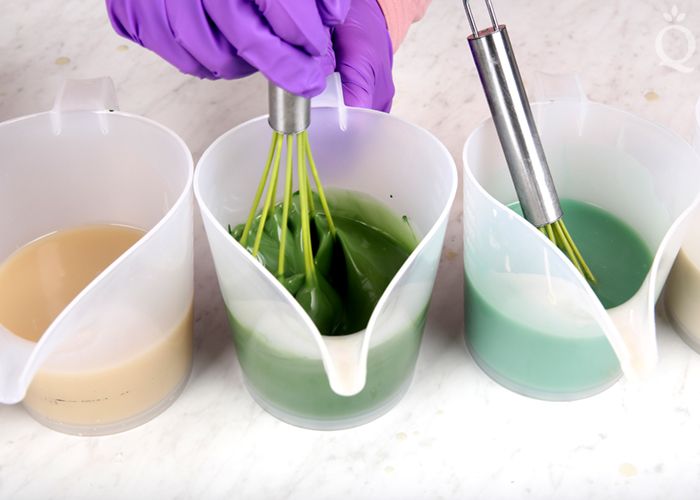
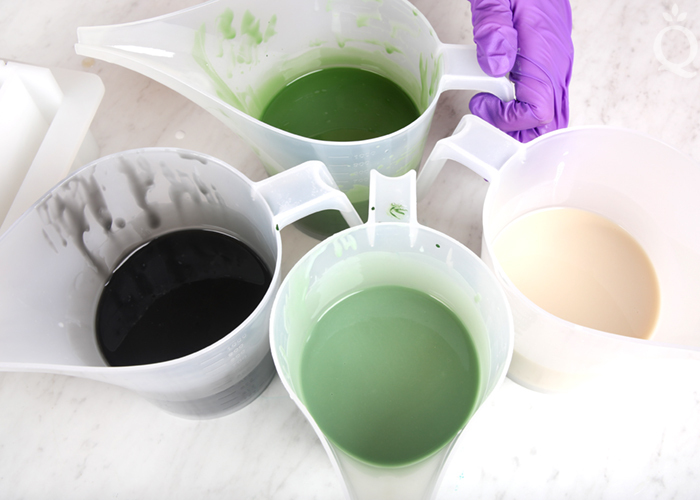
FOUR: Add the 1.75 ounces of Cucumber Garden Fragrance Oil evenly to each container of soap – it’s okay to eyeball it. Use a whisk to thoroughly mix in the fragrance.
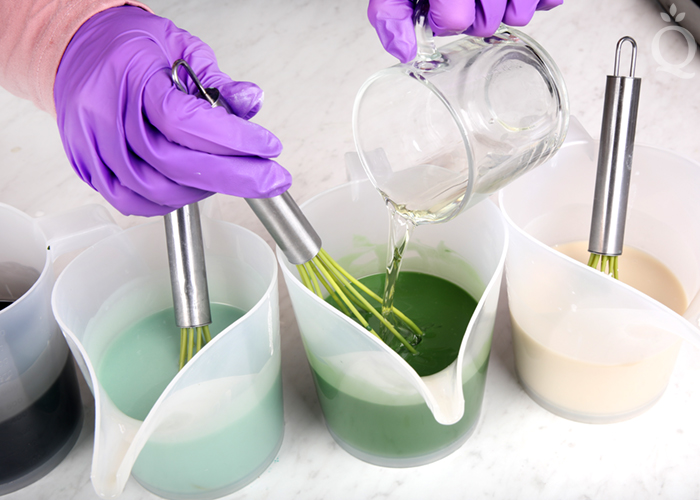
FIVE: Begin pouring each color into the four sections of the mold in the order of dark green, white, light green, and black. Pour a small amount of each color in equal amounts to keep each section filled evenly. If one section is completely full and the others are empty, the soap can leak into the other sections.
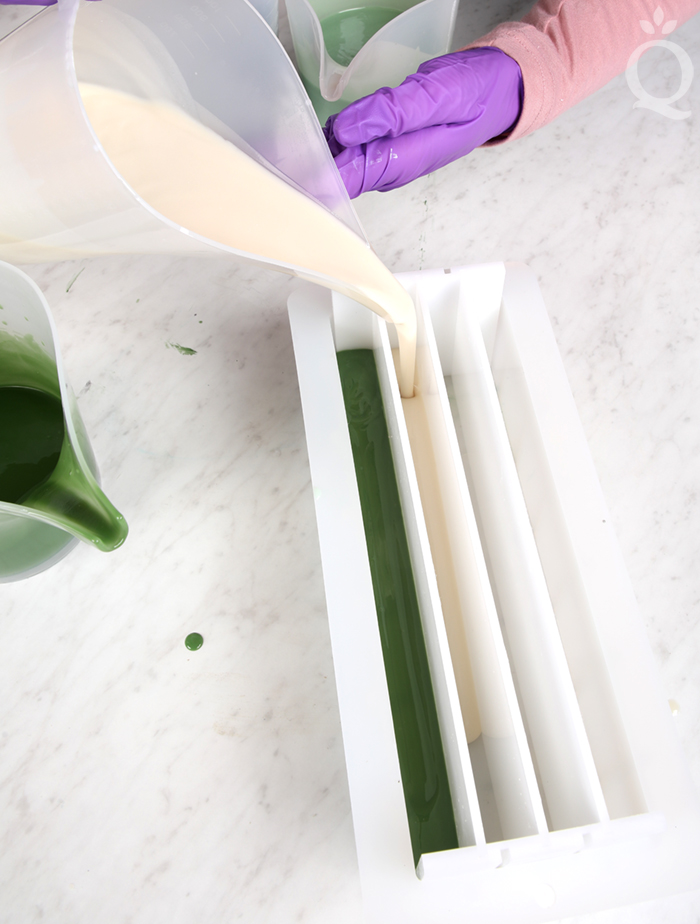
SIX: Continue pouring each color into each section, trying your best to keep them filled equally. Work carefully but quickly.
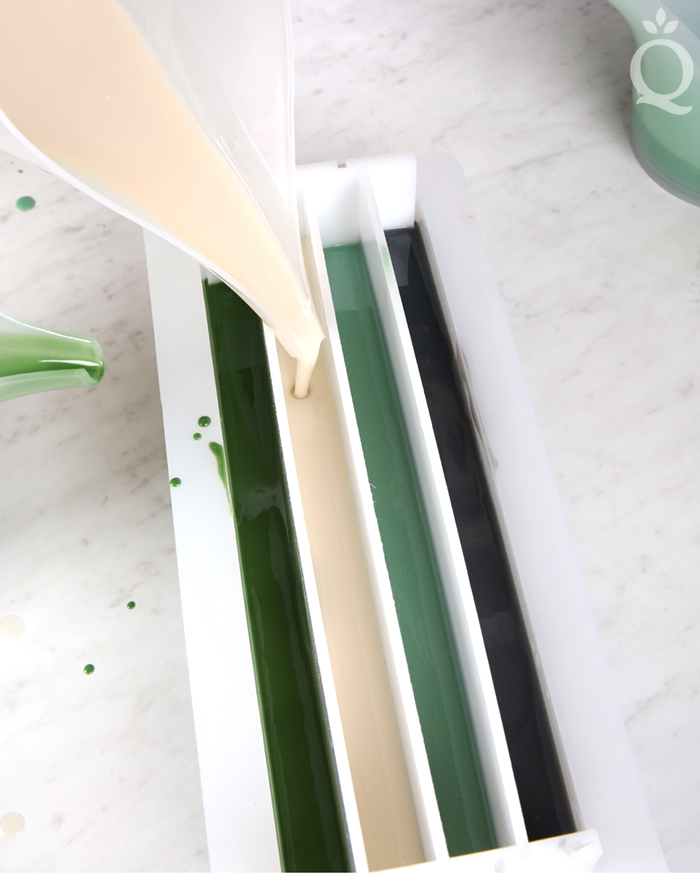
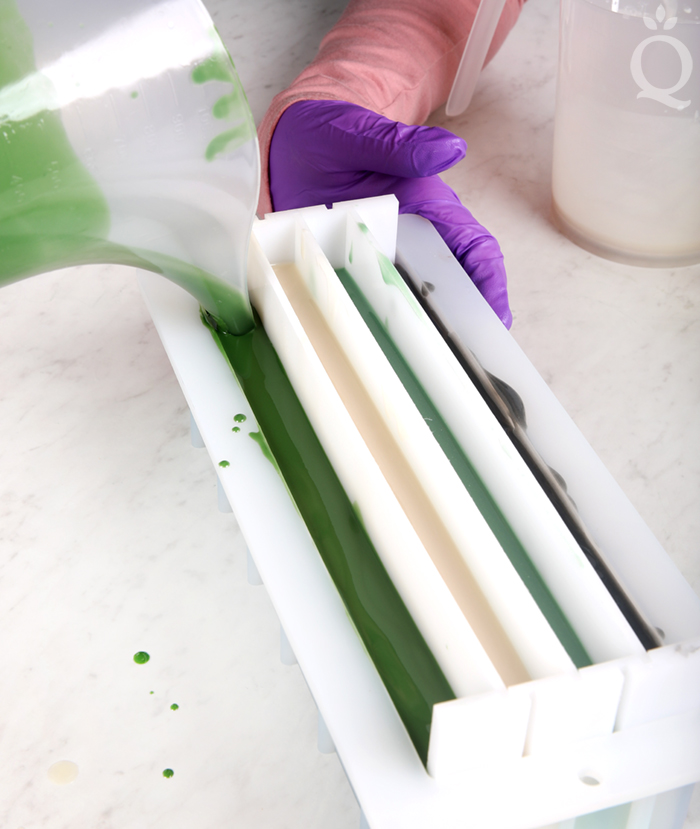
SEVEN: Carefully, pull the three long divider pieces up and out of the mold. Try to do this as cleanly as possible. The swirl looks more crisp if there are no drips of color. Pull out the end divider pieces as well.
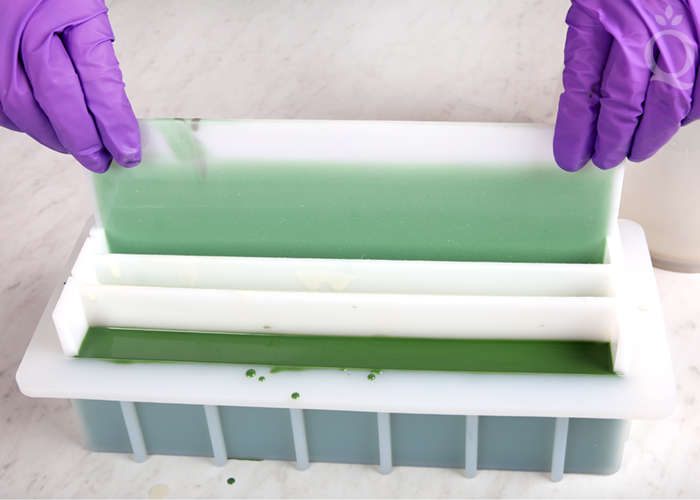
EIGHT: Insert a dowel or chopstick into the bottom of the mold and swirl back and forth down the length of the mold.
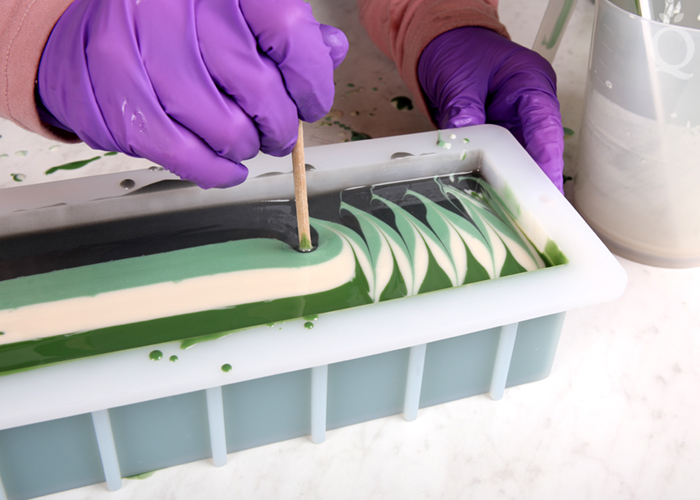
NINE: Clean the chopstick/dowel and insert it into a corner of the soap all the way to the bottom of the mold. Begin swirling the chopstick or dowel around the outside of the mold in a circle. Continue this motion over and over again to pull the swirls in a circular motion.
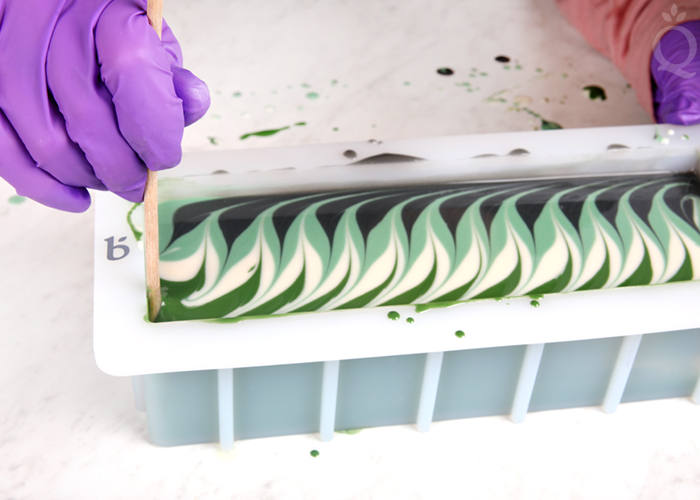
TEN: Continue moving the chopstick around the mold until you’re happy with the look. The more you swirl, the more curved the design will be. Eventually, the swirl will stop moving – this is a good place to stop.
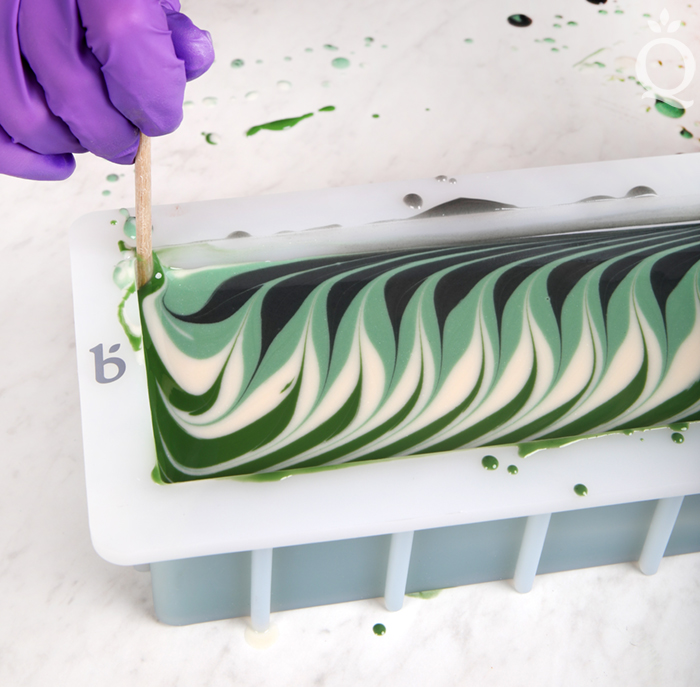
ELEVEN: Spritz the top of the soap with 99% isopropyl alcohol and cover the soap to insulate if you’d like to promote gel phase. Allow the soap to stay in the mold for 2-3 days. This design benefits from a horizontal cut – that’s what we did. The Wire Soap Slicer makes this process incredibly easy. If you don’t have this tool, see how to use a knife in the Infinity Swirl Soap video (around the 11:05 mark). Once cut, allow to cure for 4-6 weeks. Enjoy.
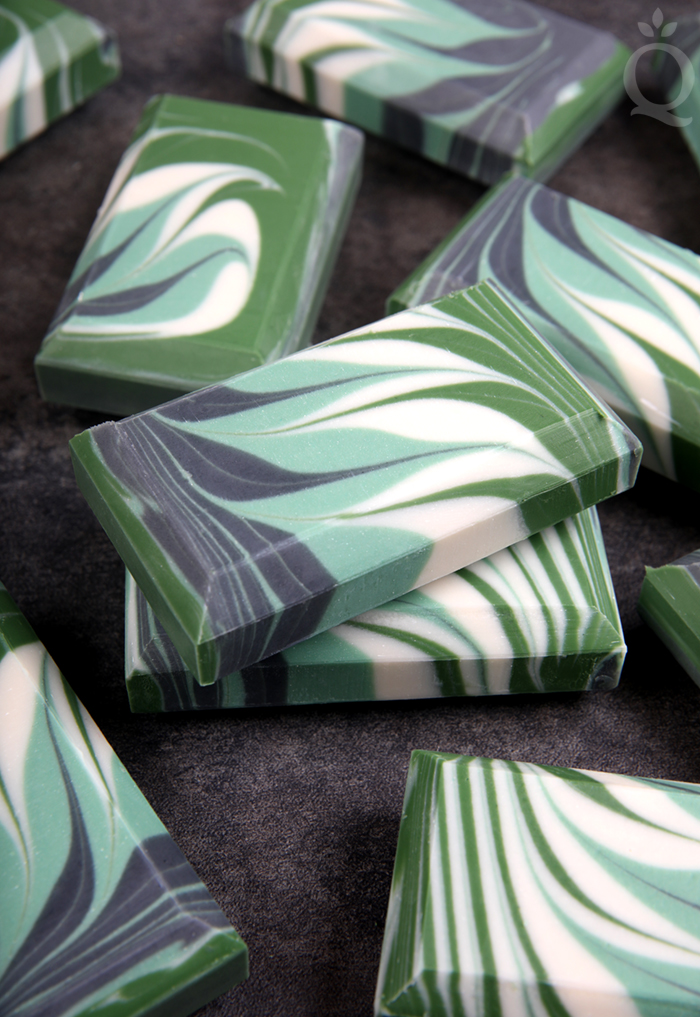
- 10″ Silicone Loaf Mold
- Multi-Pour Sectioning Tool for 10″ Silicone Loaf
- 3.3 oz. Avocado Oil (10%)
- 8.3 oz. Coconut Oil (25%)
- 3.3 oz. Cucumber Seed Oil (10%)
- 9.9 oz. Olive Oil (30%)
- 8.3 oz. Palm Oil (25%)
- 10.9 oz. Aloe Vera Liquid
- 4.6 oz. Sodium Hydroxide Lye
- 1.75 oz. Cucumber Garden Fragrance Oil
- Green Chrome Oxide Pigment
- Aqua Pearl Mica
- Titanium Dioxide
- Black Oxide
- Slowly and carefully add 4.6 ounces of lye to 10.9 ounces of aloe vera liquid. Gently stir until the lye has fully dissolved. The liquid will turn a yellow color and have a light smell – this is normal. Set it aside to cool. If you’d like a harder bar of soap that releases faster from the mold, you can add sodium lactate to the cooled lye water. Use 1 teaspoon of sodium lactate per pound of oils in the recipe. For this recipe, you’d add 2 teaspoons sodium lactate.
- In a large glass bowl, combine and melt 3.3 ounces of avocado oil, 8.3 ounces coconut oil, 3.3 ounces cucumber seed oil, 9.9 ounces olive oil, and 8.3 ounces of palm oil (remember to fully melt then mix your entire container of palm oil before portioning). Once the lye water and the oils have cooled to 130 degrees F or below (and are ideally within 10 degrees of each other), add the lye water to the oils and stick blend the mixture to a very thin trace.
- Split the soap batter evenly into four equal containers – it’s okay to eyeball it. Each container will be about 350 mL. Add the following amounts of dispersed colorants to each container, and use a whisk to mix in thoroughly.
Container A (white): 1 tablespoon dispersed titanium dioxide
Container B (light green): 1 teaspoon dispersed titanium dioxide + 1 teaspoon dispersed Aqua Pearl Mica + ¼ teaspoon Green Chrome Oxide Pigment
Container C (dark green): 2 teaspoons dispersed Green Chrome Oxide Pigment
Container D (black): ½ teaspoon dispersed black oxide - Add the 1.75 ounces of Cucumber Garden Fragrance Oil evenly to each container of soap – it’s okay to eyeball it. Use a whisk to thoroughly mix in the fragrance.
- Begin pouring each color into the four sections of the mold in the order of dark green, white, light green, and black. Pour a small amount of each color in equal amounts to keep each section filled evenly. If one section is completely full and the others are empty, the soap can leak into the other sections.
- Continue pouring each color into each section, trying your best to keep them filled equally. Work carefully but quickly.
- Carefully, pull the three long divider pieces up and out of the mold. Try to do this as cleanly as possible. The swirl looks more crisp if there are no drips of color. Pull out the end divider pieces as well.
- Insert a dowel or chopstick into the bottom of the mold and swirl back and forth down the length of the mold.
- Clean the chopstick/dowel and insert it into a corner of the soap all the way to the bottom of the mold. Begin swirling the chopstick or dowel around the outside of the mold in a circle. Continue this motion over and over again to pull the swirls in a circular motion.
- Continue moving the chopstick around the mold until you’re happy with the look. The more you swirl, the more curved the design will be. Eventually, the swirl will stop moving – this is a good place to stop.
- Spritz the top of the soap with 99% isopropyl alcohol and cover the soap to insulate if you’d like to promote gel phase. Allow the soap to stay in the mold for 2-3 days. This design benefits from a horizontal cut – that’s what we did. The Wire Soap Slicer makes this process incredibly easy. If you don’t have this tool, see how to use a knife in the Infinity Swirl Soap video (around the 11:05 mark). Once cut, allow to cure for 4-6 weeks. Enjoy.
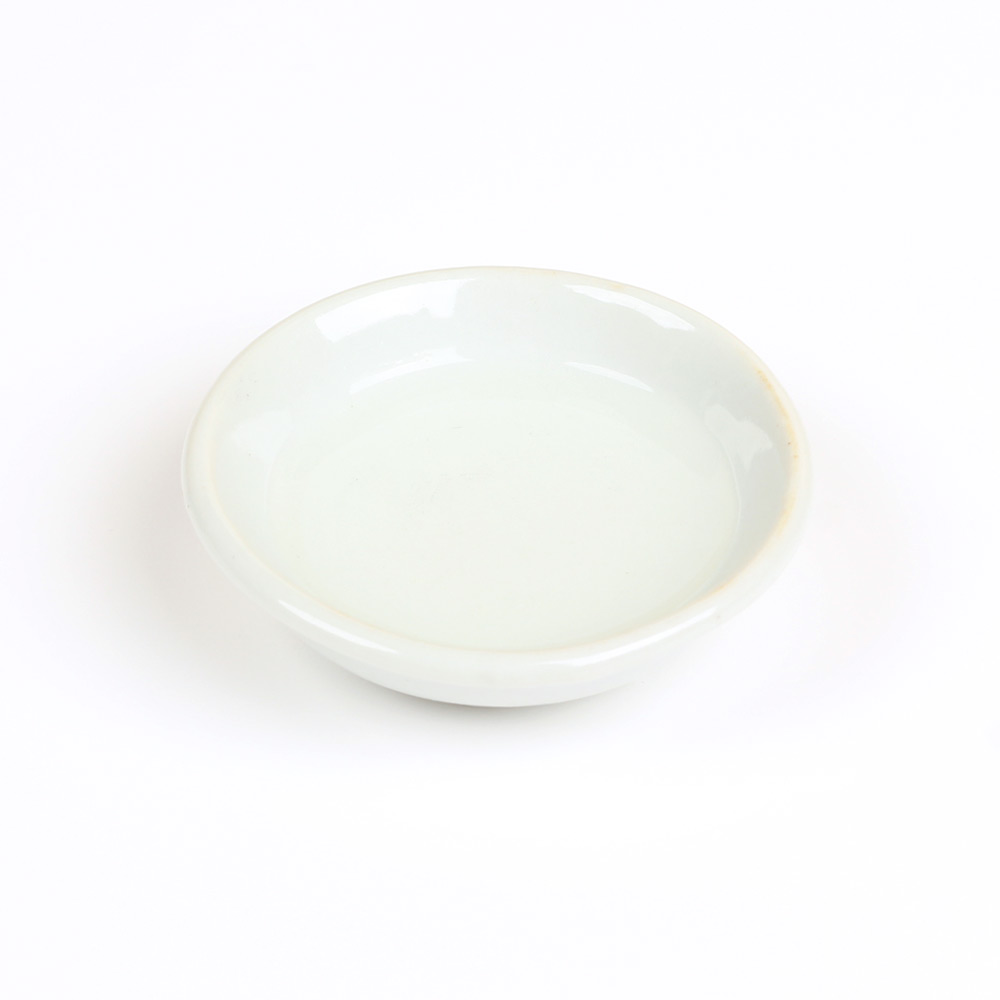
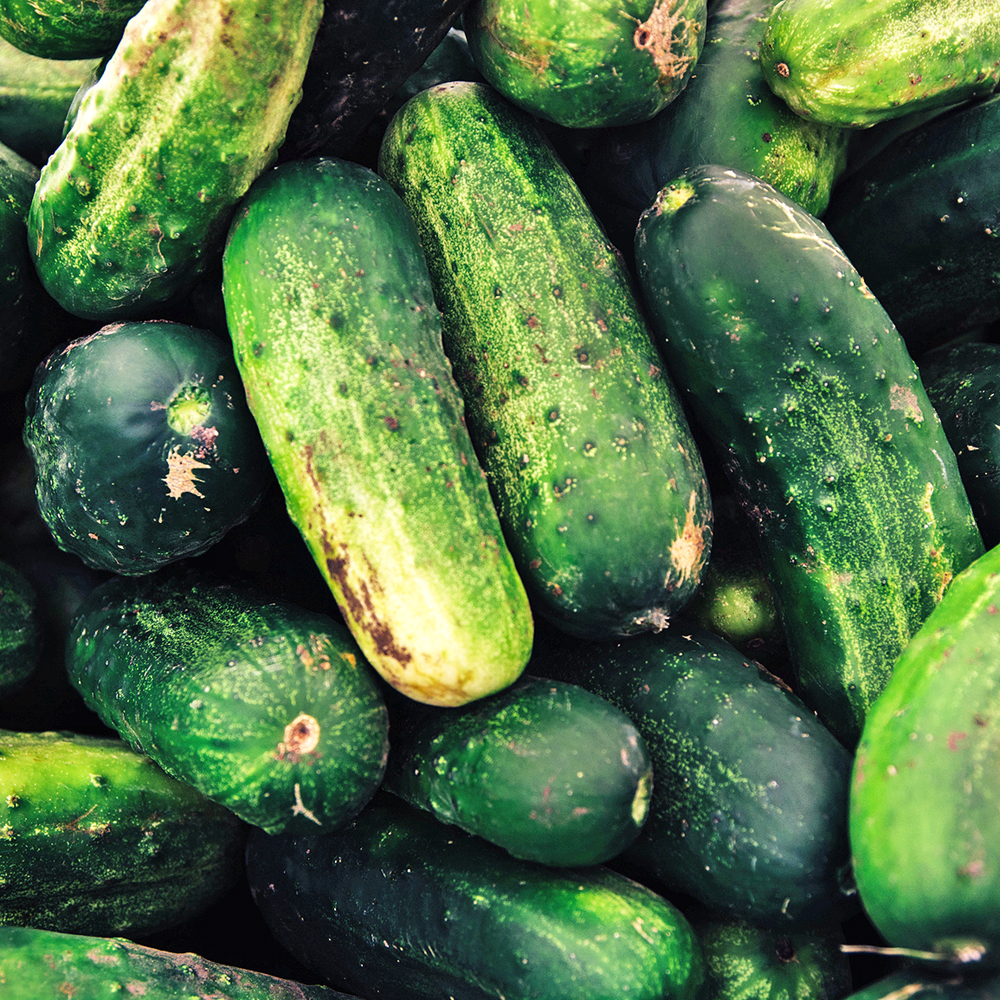
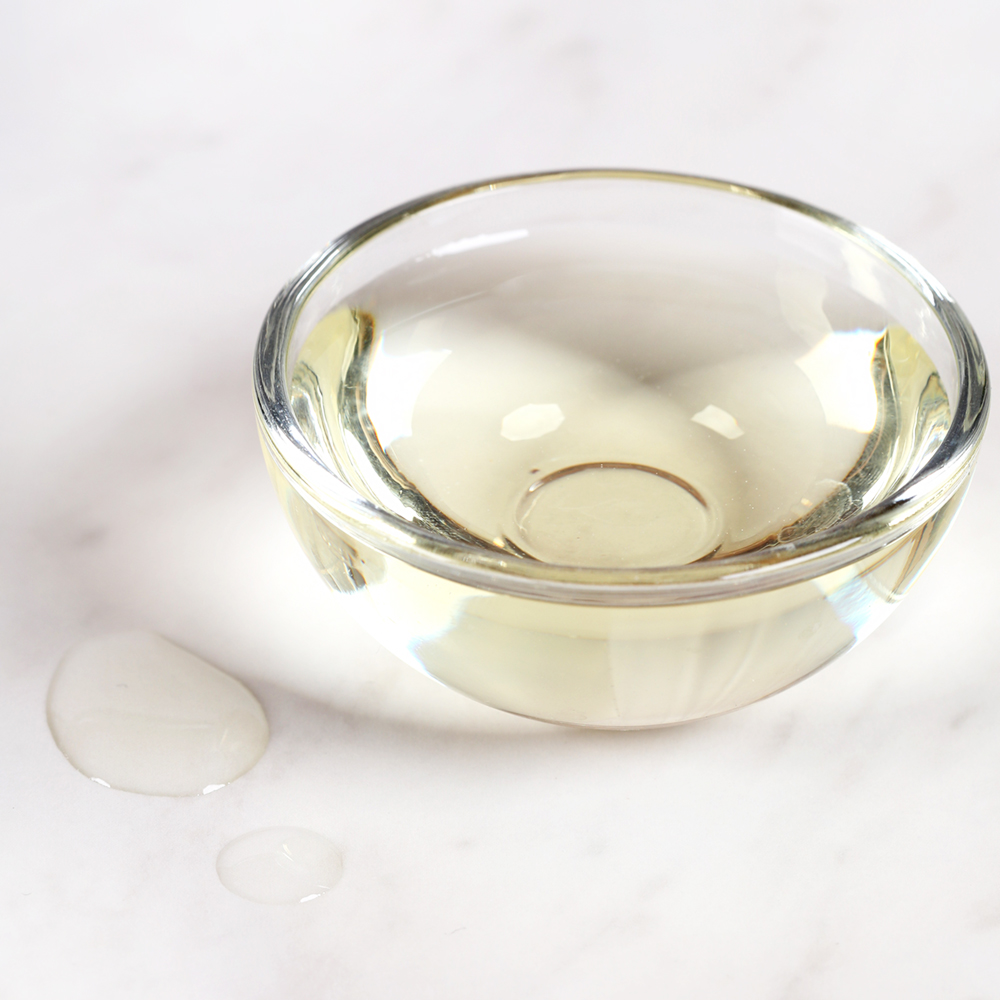

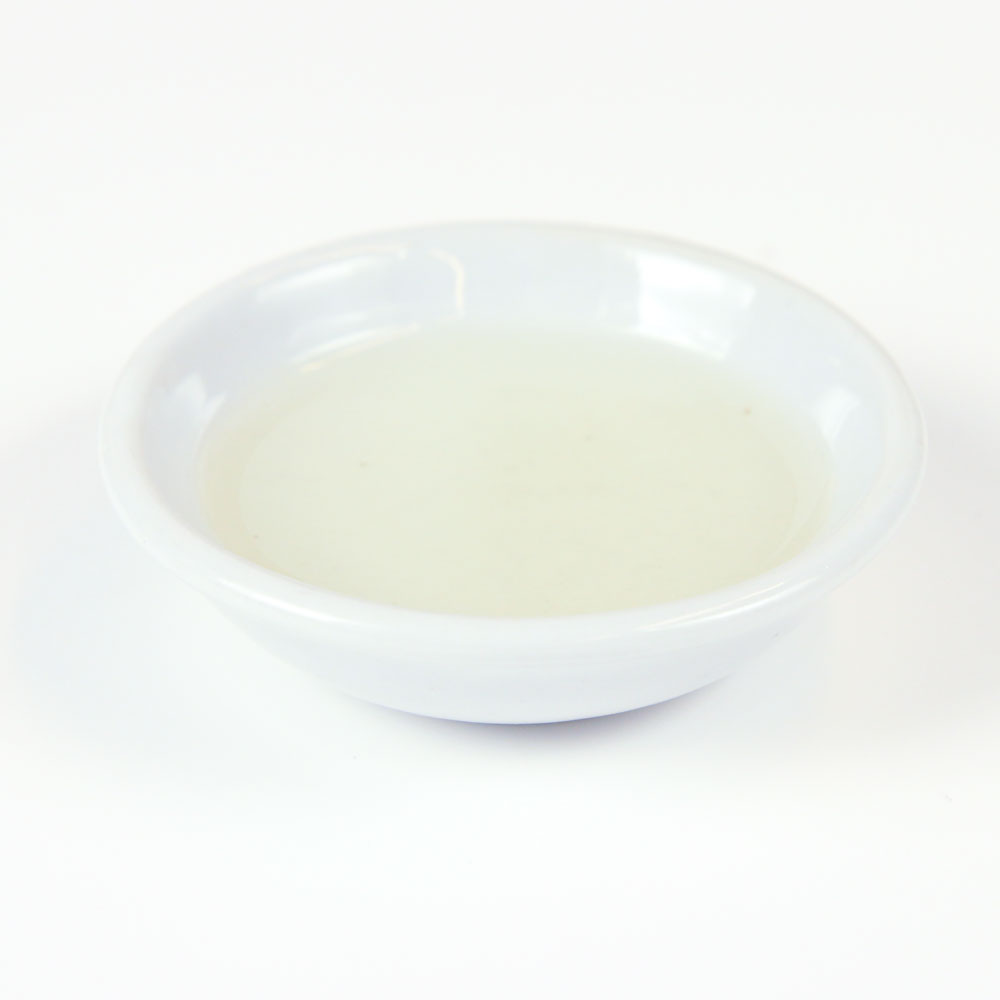
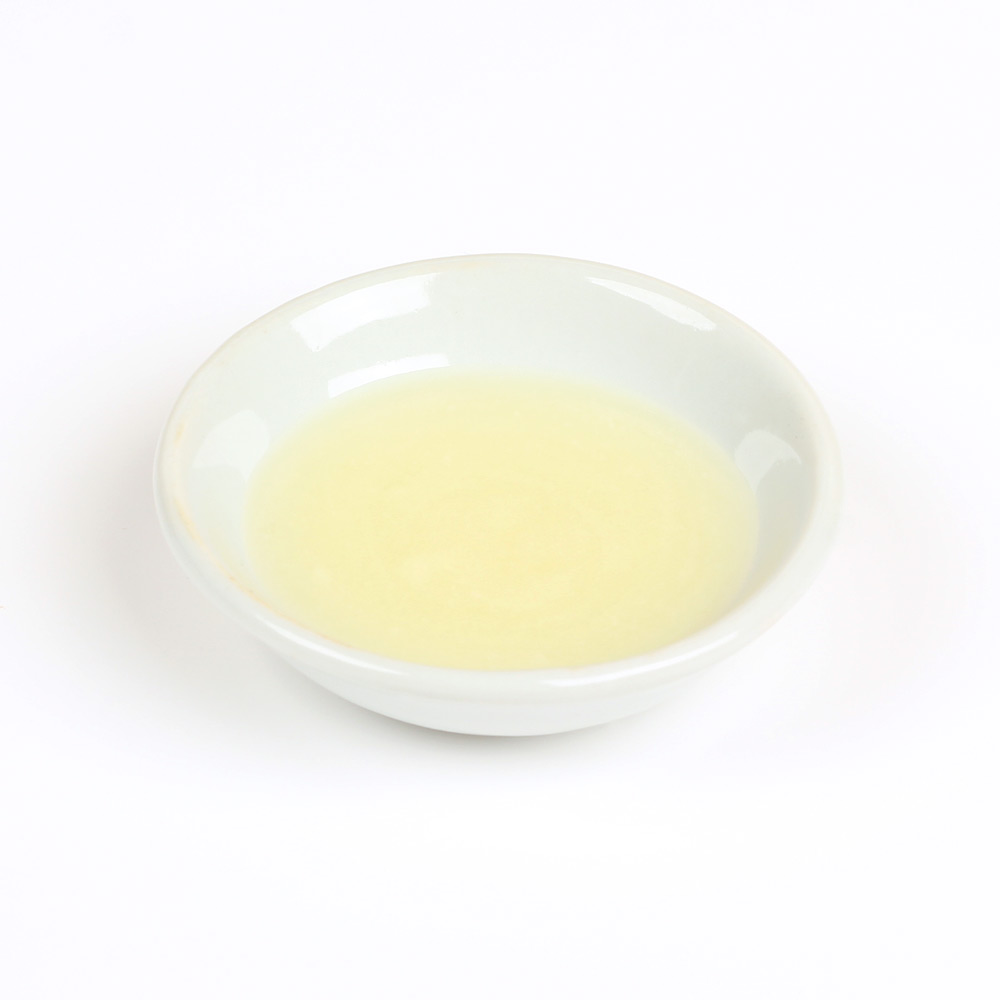

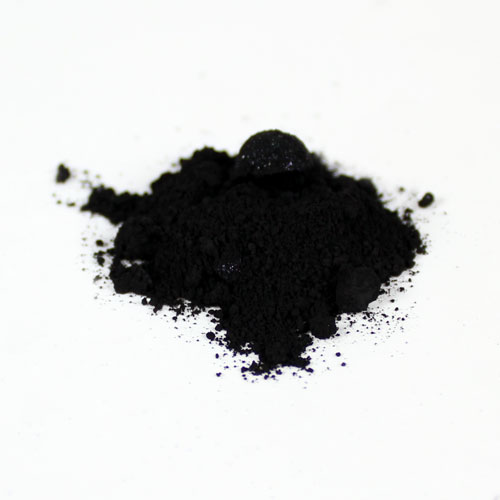

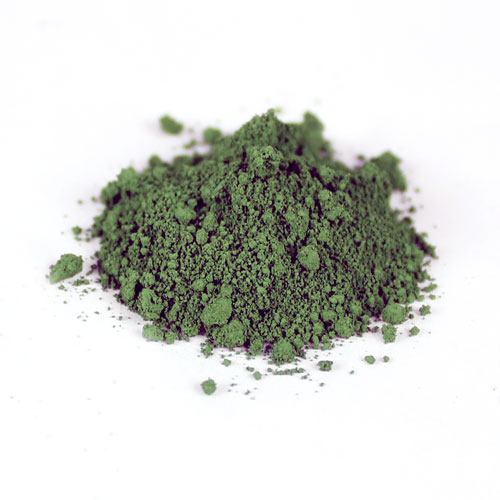
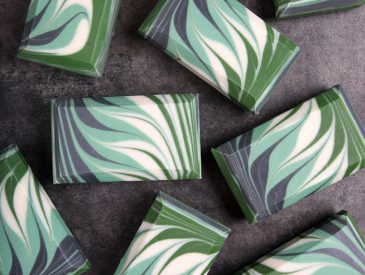


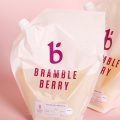
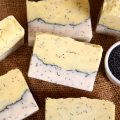
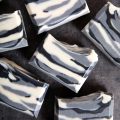
I used this recipe over the weekend, but I substituted lard for the Cucumber Seed Oil (3.3 oz). Per the lye calculator, I increased the lye and aloe vera liquid very slightly. My mixture accelerated to thick trace immediately when I combined the oil and liquid. I had not added colorant or fragrance at this point and had only just turned on the blender. I am an experience soaper, and I have never had this happen before. Do you have any ideas? I’d like to remake the soap, but I’m afraid to try this recipe again. Thank you.
Hi Claire, we’d recommend keeping your lye and oil temperatures up around 125F when combining to try and stop that acceleration from happening. Soaping ‘cold’ can cause your soap to set up very quickly.
if I don´t have aloe vera liquid, what to use instead of it? or just leave it out?
thank you
SORRY, I already read that it can be replaced with distilled water.
Is there any way I can just purchase some of these?
We don’t sell the soap you see here, but we do sell the supplies to make it on BrambleBerry.com. You can also buy handmade soap on Etsy or at a local market or store.
Can I substitute the cucumber seed oil with cucumber extract and a less expensive oil
You can use another oil in place of cucumber seed if you like. Sweet almond oil is a good option, or you can increase the olive oil to cover the difference.
Sweet almond oil: https://www.brambleberry.com/Sweet-Almond-Oil-P3205.aspx
Remember to run your recipe through the Lye Calculator after any substitutions: https://www.brambleberry.com/Pages/Lye-Calculator.aspx
And learn more about substituting oils here: http://www.soapqueen.com/bath-and-body-tutorials/tips-and-tricks/how-to-substitute-oil-in-cold-process-recipes/
As for the cucumber extract, it’s considered an additive so it’s not factored into the main oil amount. You can add 1 teaspoon per pound of soap at trace or right into the mixed oils: https://www.brambleberry.com/Cucumber-Extract-P6362.aspx
I finally tried it with a few small changes and it’s one of my best taiwan swirls. This is also the first time I used aloe vera juice and it worked like a charm! I used grapeseed oil in place of cucumber seed oil and apple sage in place of cucumber fragrance oil. Other than that, it is your exact recipe, colors and instructions. Thank you! It is on youtube.com under theorgelmeister with no ads.
Oh that’s awesome, glad to hear that Eric. It’s a fun technique to try.
The bevel on this soap is really nice! What tool is used and is it sold at Brambleberry?
We used the Soap Beveler for this recipe. It gives the bars a nice polished look: https://www.brambleberry.com/Soap-Beveller-P4141.aspx
Is there any way to add some coconut milk to this recipe at very thin (just emulsified) trace? I have seen other soapers do this but I was never sure what the process would be, for example, do you take away some of the aloe juice in the water phase or?
Thank you,
Ilina
Yes, you can add coconut milk at trace. A good place to start is about 1 ounce of milk per pound of soap, and remember to discount that from the aloe amount. Once the soap is in the mold, put it in the freezer for 24 hours to prevent the milk from scorching.
Also, keep in mind that adding less aloe at the beginning may speed up trace just a bit. Be prepared to work quickly.
Coconut milk powder: https://www.brambleberry.com/Coconut-Milk-Powder-P5669.aspx
What do you do with the little strips of soap when you bevel the edges? This is absolutely gorgeous by the way.
There are lots of options for soap scraps – you can rebatch them, embed them into another soap, or give them out as samples. This blog post has more ideas: https://www.soapqueen.com/bath-and-body-tutorials/tips-and-tricks/use-leftover-soap-scraps/
The soap is gorgeous and it’s one of my favorite patterns. I find it MUCH easier to remove the whole sectioning tool in one piece. Grab the ends, push inward to keep it together and slowly lift the whole assembly out in one piece.
Oh that’s a good tip, we’ll have to give that a try. Thanks Eric.